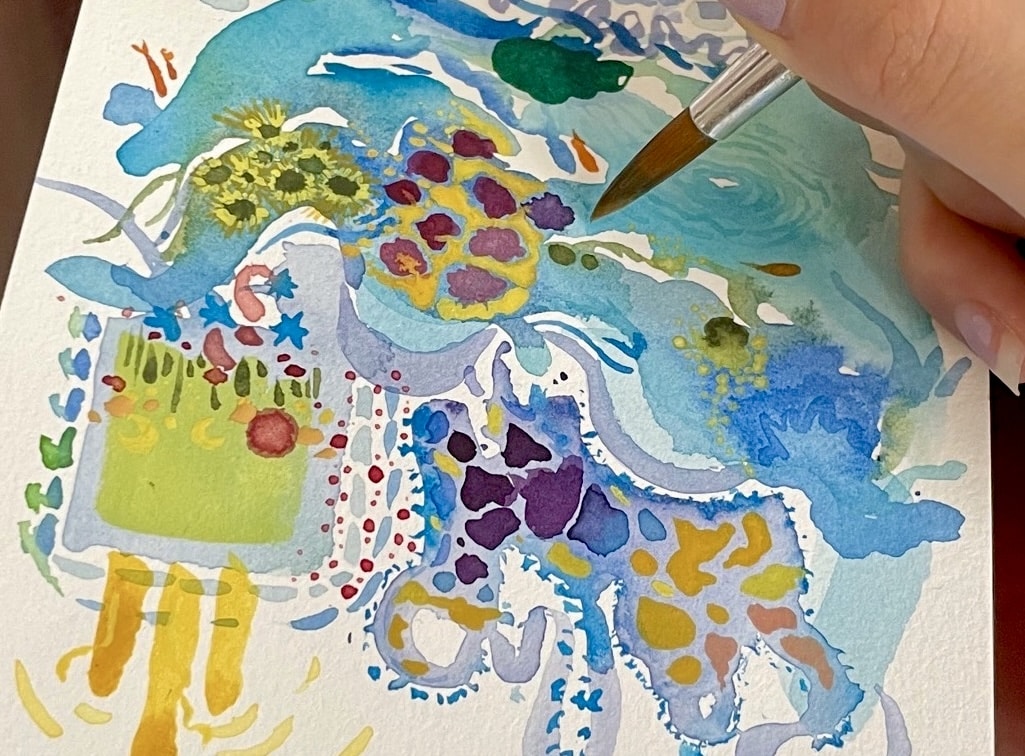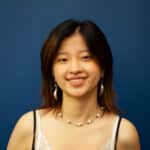Call it cliché but I believe everyone is a true artist
Demystifying abstract art and introducing the style of intuitive painting.
When I asked one of my friends, “Can you draw something for me?” he said, “Sure, but I’m not that good. What I have is just an elementary school art style.” That dear friend of mine had no idea that what I love most is the naivety and simplicity of that exact style.
In the past, people were fixated on the idea that an artwork was only considered great if it perfectly replicated real-life objects. Thankfully, with the invention of photography and the rise of the Impressionist movement, namely Monet’s Impression, Sunrise, this dominance of realistic aesthetics was challenged. It introduced a new way of seeing: abstraction. Later, in the era of modern art, abstraction continued to thrive in diverse and creative forms.
As a lover of abstract art, I’m so grateful for this shift. It opened the door for more people to try art, not as a skill that requires formal training, but as a powerful tool for self-expression. To me, abstract art isn’t just random, obscure doodles that sell for millions. It marks the beginning of true artistic freedom, placing value and respect on an artist’s expression, even if you can’t immediately tell what they’re creating.
As an artist myself, I’ve never taken a formal art class. Yet I still proudly call myself an artist because I believe what I create represents my thoughts and who I truly am.
Currently, there’s a newly-opened graduating student show at the Blackwood Gallery in the Kaneff Centre, where I’ve presented my full collection of abstract works from the past five years for the first time. Seeing my work on display and receiving so many kind comments and heartfelt appreciation really affirmed what abstract art means to me.
In my practice, I use a method called intuitive painting. I start with no vision, just a blank sheet of paper and a watercolor palette. There’s no pressure to match an image in my head, only room for surprise. I fully trust my intuition throughout the process, painting wherever feels right to me.
Sometimes, I hear two voices in my head, one suggesting that yellow would go well with pink, and another saying, “No, don’t follow any colour theory, just pick the craziest combination you can think of.” Most of the time, I listen to the second voice, just to make the painting process even more unpredictable and fun. And as always, I am fascinated by the unique result at the end of each piece.
Lately I’ve been practicing not judging whether a piece is good or bad when I finish. Instead, I guide myself to be more open, humble, and understanding toward these creations rather than have bias toward it.
So, I highly encourage you to try this intuitive style of art-making, and don’t judge yourself at the end. This method offers a meditative and personally rewarding experience.
If you’re interested in seeing the results of my own intuitive practice, my work is currently on display at the Blackwood Gallery as part of the graduating student exhibition, Do Not Go Gentle Into That Good Night, which runs until April 11. You are warmly invited!
Photos Editor (Volume 51) — Sara is in her final year, double majoring Art and Art History and CCIT. Sara is an art enthusiast who loves art making, music, and photography. Her current works mainly consist of small, yet colorful, abstract paintings. Sara hopes to become an influential artist. If you’re interested in her artistic world, please visit her Instagram at: saralisara33. While commuting, she enjoys her diverse playlist, including alternative rock, R&B, and K-pop, with her favorite artist being Keshi. She loves using her camera to create aesthetic images while capturing real-life moments. This is her first time as a photo editor for a newspaper, and she hopes to contribute great photos to the Medium.


